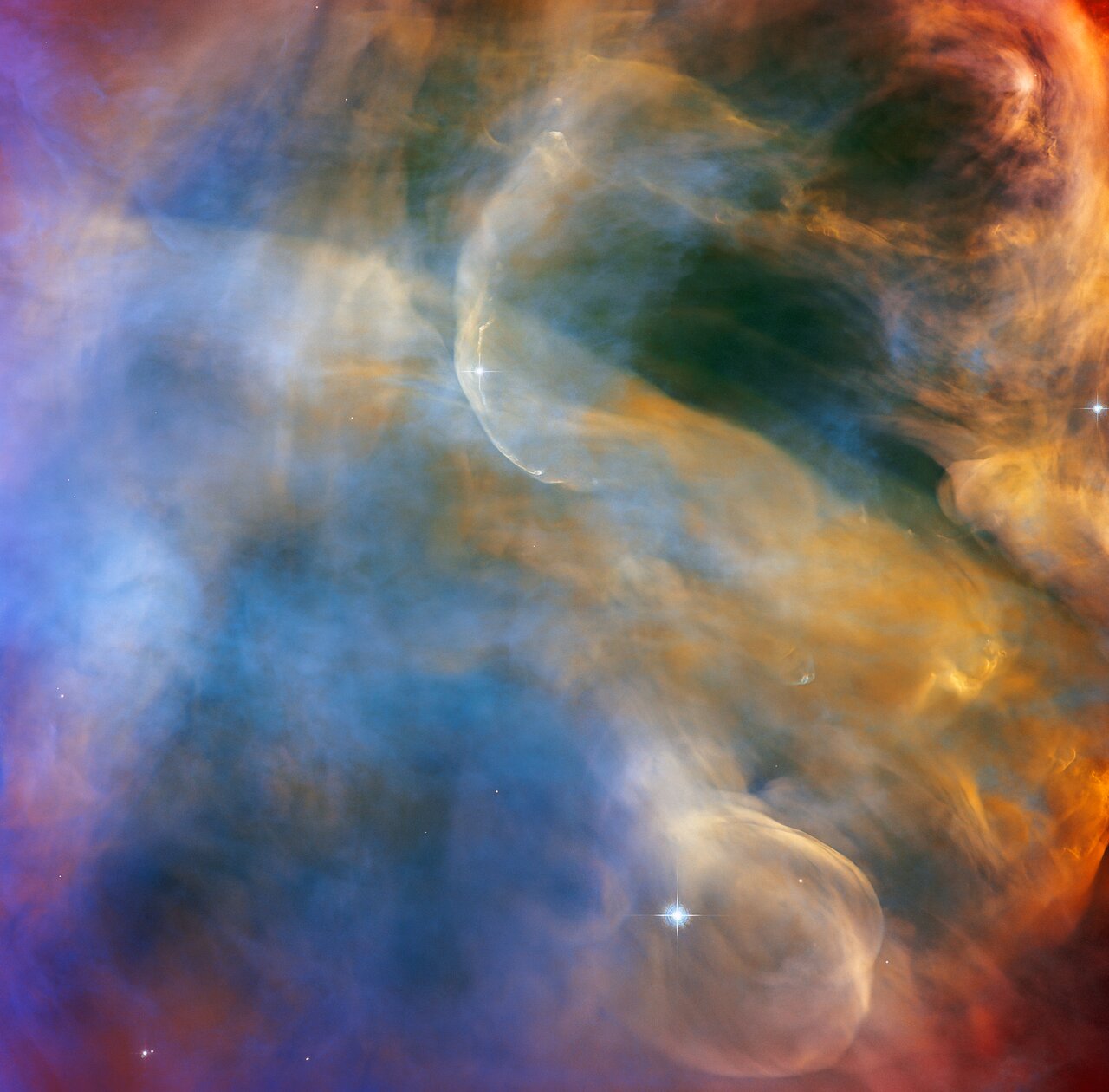Hubble Space Telescope paints stellar outflows in new portrait of the Orion Nebula

Swirling like some cosmic watercolor painting, behold this breathtaking new image of the Orion Nebula recently captured by a venerable space telescope.
This dreamy Hubble Space Telescope photo is a vibrant cloudscape that exists in the territory surrounding the Herbig-Haro object HH 505 in a remote corner of the Orion Nebula about 1,000 light-years from Earth, according to a statement from NASA and the European Space Agency, which operate the observatory.
Herbig-Haro objects are bright clouds around infant stars. Such newborn stars can eject violent stellar winds or fast-moving jets of ionized gas, which can create heavenly shockwaves when they collide with nearby gas and dust.
Related: The best Hubble Space Telescope images of all time!
In the case of HH 505, these pulsing outflows erupt from a star called IX Ori, which spins in the far boundaries of the vast nebula. The resulting beautiful high-velocity ripples can be observed as the elegant seahorse-shaped lines near the top and bottom of the Hubble image, which was released on Monday (Aug. 8).
The new image comes courtesy of Hubble's Advanced Camera for Surveys (ACS) via a team of astronomers studying the dramatic properties of outflows and protoplanetary discs. The researchers chose their target well: The Orion Nebula abounds with intense ultraviolet radiation spewing from bright young stars.
Shockwaves produced by these energetic outflows are easily visible to the Hubble's instruments, along with the gentler currents of drifting stellar material illuminated by radiation. It's this direct observation that lets astronomers understand more about the formation and structure of these swirling jets and blasting outflows.
Breaking space news, the latest updates on rocket launches, skywatching events and more!
The Orion Nebula is the region of star incubation closest to Earth, located in the constellation Orion. The Nebula is a prolific patch of dust and gas some 24 light-years across where the conception of thousands of stellar objects appears right before our inquisitive eyes.
Because of its bounty, the Orion Nebula is often in the spotlight of scientific minds and photographic equipment and is a favorite focus of the Hubble Space Telescope. This particular observation was just one component of a breathtaking Hubble mosaic of the Orion Nebula that fused 520 ACS images rendered in five colors to create the clearest tableau of the nebula ever.
Follow us on Twitter @Spacedotcom and on Facebook.

Jeff Spry is an award-winning screenwriter and veteran freelance journalist covering TV, movies, video games, books, and comics. His work has appeared at SYFY Wire, Inverse, Collider, Bleeding Cool and elsewhere. Jeff lives in beautiful Bend, Oregon amid the ponderosa pines, classic muscle cars, a crypt of collector horror comics, and two loyal English Setters.

